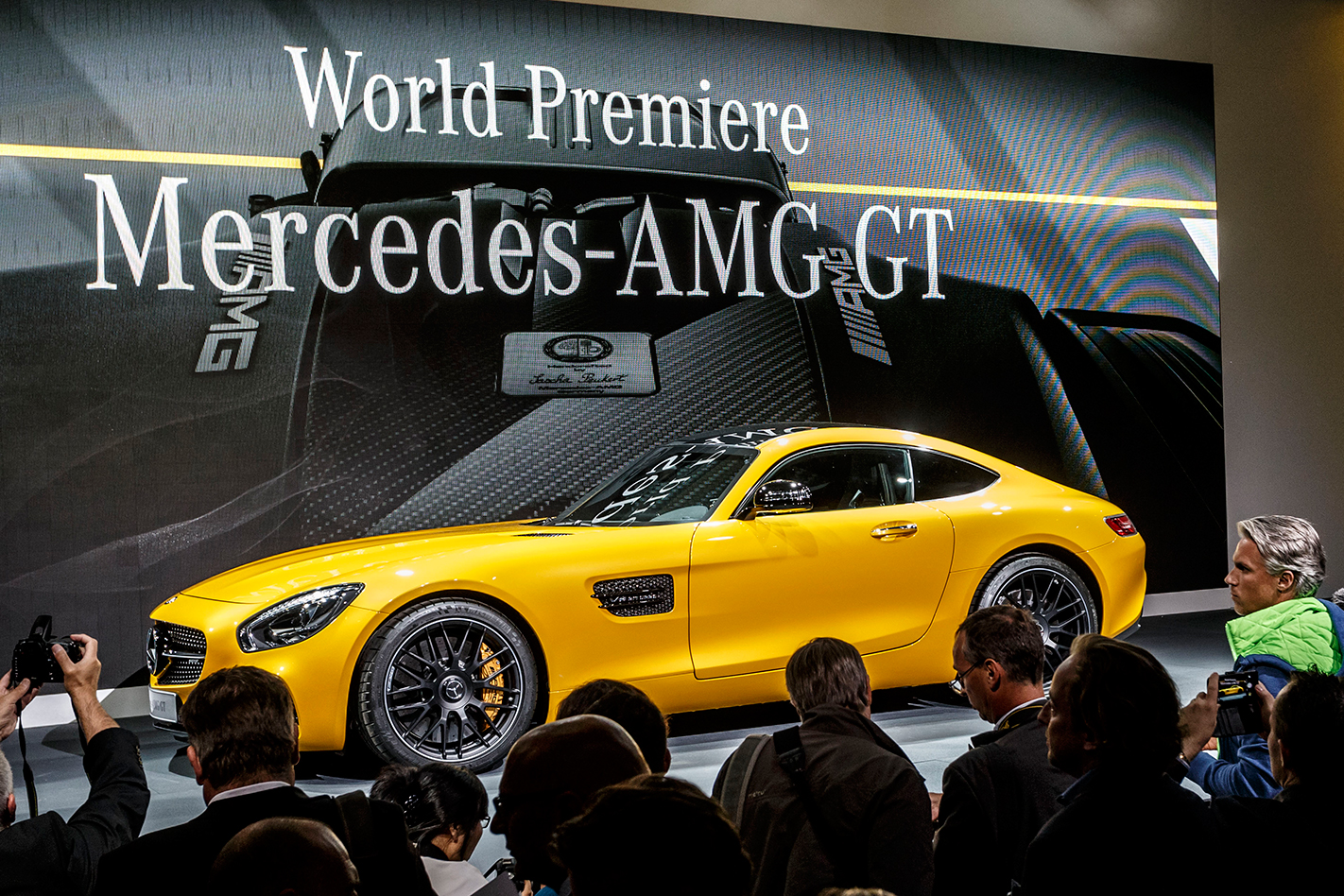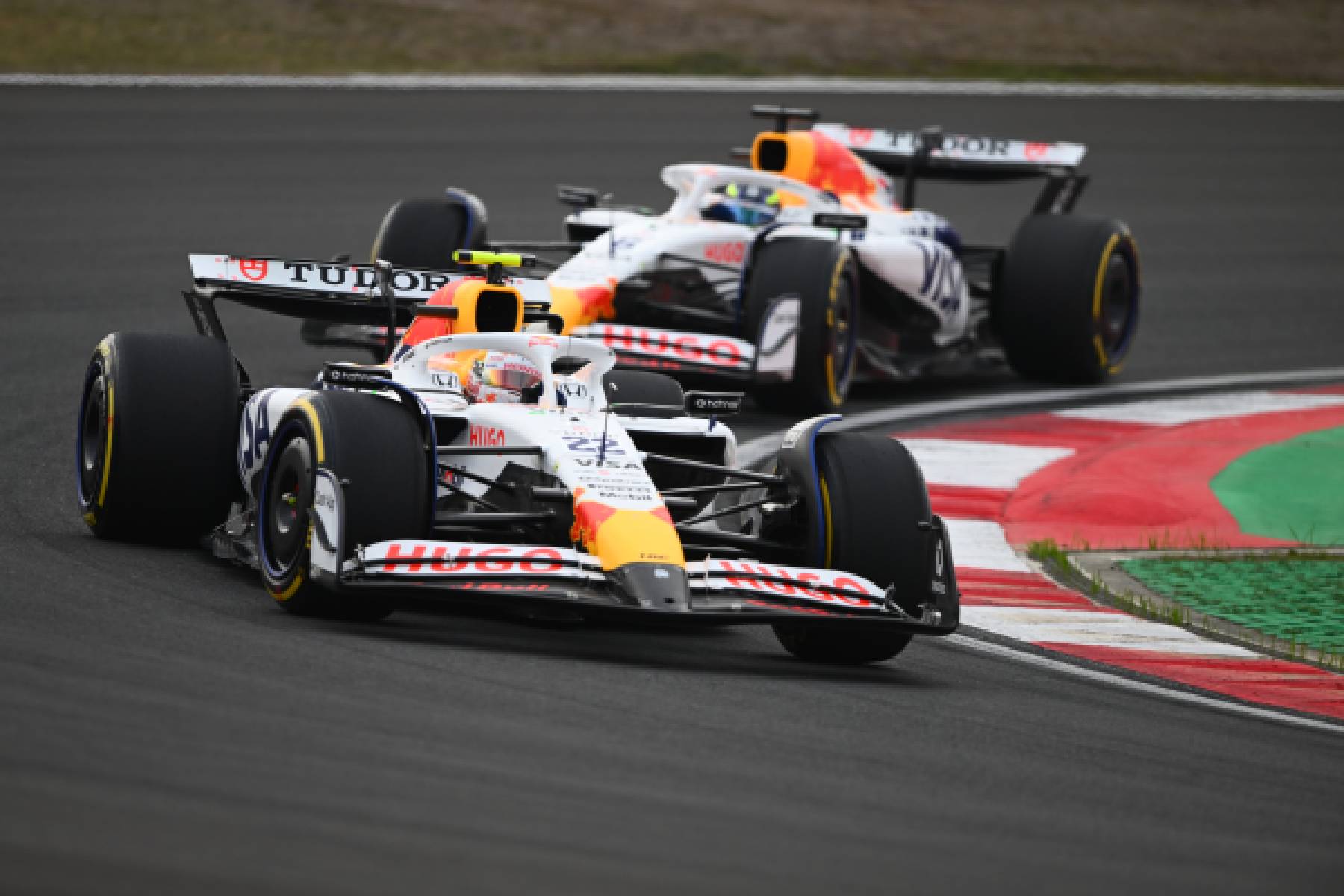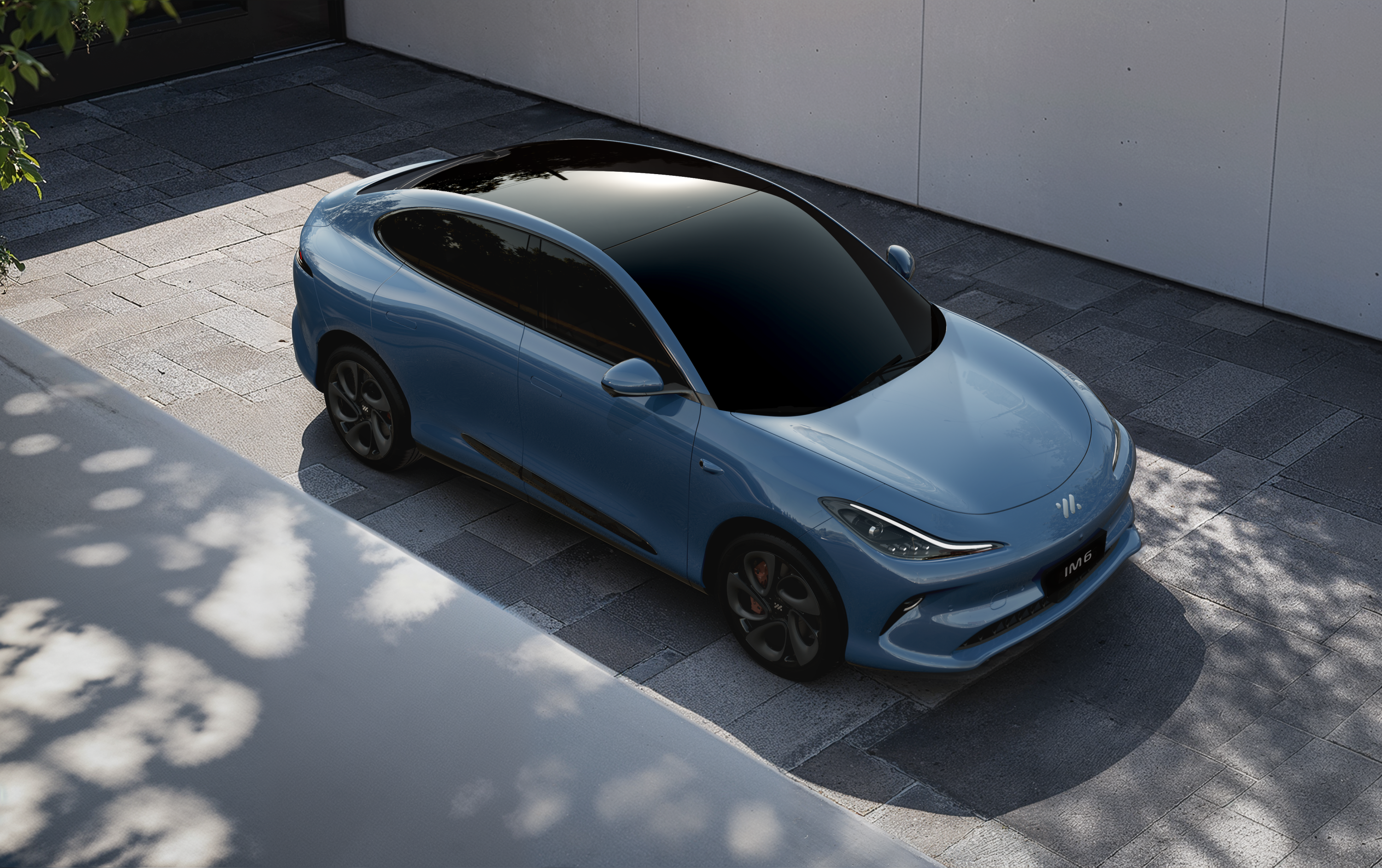EXTERIOR designer Robert Lesnik runs a hand slowly from the rear glass across the hindquarters of the car he helped create, the Mercedes-AMG GT, and declares: “For me, this is the sweetest spot of the GT.”
It’s no coincidence that this would be the area that reminds so many people of the Porsche 911, the iconic sports car that’s firmly the target of AMG’s second exclusive in-house model.
The rusted-on Porsche fanatics will insist the engine’s in the wrong place, but the GT – revealed in Germany earlier today – looms as one of the more formidable competitors (in a long line of ultimately busted and dusted aspirants) hoping to dethrone the thus-far impregnable 911.
AMG’s fixation on making the GT a pure sports car and a 911-beater carries over to some elements of the styling, especially the rear shaping.
The long nose and grille, though, is all Mercedes, with an obvious influence from the five-year-old SLS ‘Gullwing’, AMG’s first design and the car that provides the basis of the GT.
Broader Mercedes design language is present too. The side air outlets are a Mercedes cue, lower air intakes pay homage to the E63 AMG, and there is an S-Class prompt with the LED light signature and character lines on the door panels.
Lesnik spoke lovingly at the unveiling of inspiration from past icons such as the 1950s 300SLR and 300SL for a car he insists is not remotely retro.
The GT goes on sale in mid-2015 and, while there’s no mistaking its target, it won’t be an easy conquest; the venerable rear-engined 911 has already survived more than 50 years of attacks from every quarter.
While it attempts to do some damage to the 911, the AMG GT also carries halo-car responsibility to woo younger and bolder buyers with its aggressive look and lively performance.
But AMG’s engineers have reportedly not strayed from a directive to make the GT’s daily driveability an imperative. Entry and egress is somewhat less confronting than with its SLS big brother and those bothersome gullwing doors.
“The new Mercedes-AMG GT shows that we will be positioning AMG more vehemently and aggressively than to date as a dynamic sports car brand,” Mercedes-AMG chief Tobias Moers said. “The technological substance of the Mercedes-AMG GT underscores our high aspirations with regard to driving dynamics, agility and sportiness.”
Yeah, yeah, yeah, we hear the Porsche people muttering…
Developed totally independently by Mercedes-AMG, the new two-seater is in a segment never previously tackled by Mercedes.
No expense was spared in presenting the new GT to the world. The premiere was attended by Mercedes and AMG heavies, dignitaries, a large slab of the AMG workforce, 350 media and motor racing heroes Bernd Schneider and Nico Rosberg.
The GT’s all-aluminium spaceframe chassis is similar to SLS, but is appreciably shorter. All panels bar the steel bootlid and many suspension components are aluminium.
Specific attention has been paid to the joins, AMG using a multiple attack – MIG welds, rivets and adhesives to ensure high stiffness levels. A magnesium front-end module reduces weight ahead of the front axle.
Both versions presented at the premiere – the GT and the sportier GT S – are powered by a newly developed 3982cc V8 engine with turbochargers mounted inside the vee, configured to two output levels. The GT is endowed with 340kW, and the GT S gets 375kW.
A paddle-shifting seven-speed dual-clutch gearbox is standard in both models.
AMG says the accelerative surge is present from very low revs with a performance potential of zero-100km/h in 3.8sec and 310km/h for the GT S. The GT is hardly a tortoise, with 4.0sec and 304km/h claimed.
If those numbers are accurate, the Merc may have the wood on its Porsche rivals in the run to 100km/h.
AMG let us have a look and listen to the V8 on one of its nine test benches. The engine emitted a guttural growl when fired up, but then howled with magnificence all the way to the 7000rpm redline.
Engine and powertrain boss Christian Enderle confirmed the 4.0 V8 “will be with us a long time”. More powerful versions in the future? “Let’s see,” he smiled.
Enderle revealed that the biggest challenge in the development of the dry-sumped engine with the turbos located within the vee was the cooling system.
AMG says every attempt was made to avoid creating a computer-driven car, a PlayStation on wheels. Its electronic control systems are intended to be relied on only when necessary.
Still, the GT S has the world’s first transaxle with dynamic engine and transmission mounts – four all told – connecting to the body. Sensors recognise the driving situation and individually regulate the stiffness of the four mounts, optimising sportiness and comfort.
Speed-sensitive sports steering features a variable ratio, responding to road speed, lateral acceleration and the prevailing AMG Dynamic Select mode.
Suspension is double-wishbone front and rear, similar to the SLS and another steal from motor racing.
Brakes are simply massive, with discs of 402mm diameter in the GT S. The rotors are of a steel/aluminium composite, or carbon-ceramic.
Wheels vary in size front to rear on the GT S – 19s up front, 20s on the rear – while the GT gets 19s all round.
An electronic-mechanical rear locking diff is also standard issue with the GT S, for improved traction at the driving wheels. The GT gets a regular mechanical diff lock.
With the V8 mounted behind the front axle line, a rear-mounted transaxle and widespread aluminium construction, the 1540kg GT (30kg more for the GT S) achieves 47/53 weight distribution – yes, a rearward bias, though not as much as a 911, which has as much as 61 percent over the rear wheels.
Though 50/50 is theoretically the ideal balance, AMG chassis development senior manager Raphael Winter concedes nothing: “We have found this is the best solution.”
Turning into corners, we were told, there is less frontal weight to move in a different direction. Then, accelerating out of a turn, there is additional weight at the rear for better traction. Not unlike a rear-engined race car.
The cockpit of the GT is a stunning combination of sportiness, function and unrepentant gorgeousness that pushes forward the evolution of the central “aviation design” theme typical of Mercedes-Benz sports cars.
The wing-design dash is supported by four central spotlight-style vents and individual vents at either ends of the dashboard.
The dominant centre console presents a correspondingly dynamic character with its choice of materials reminding us of Mercedes’ long motor sport history. A screen poking out of the centre of the dash is the only jarring visual note.
Compared with Audi’s new virtual cockpit infotainment screen, the Merc arrangement looks positively historic.
But a clever design feature comes in the controls on the AMG Drive Unit, which are arranged like eight cylinders in a V layout.
The cockpit itself is quite snug for a big driver, with the high sills – so good for rigidity – proving a literal hurdle when exiting. The driving position and seating is very good, though the gear selector is a little too far rearward on the console.
A nicely carpeted but shallow boot allegedly takes 350 litres of luggage.
Both the GT and GT S will be sold in Australia initially, the more popular surely being the more powerful and more expensive GT S. Dunno why Merc would bother with the entry car; AMG buyers rarely settle for anything but the best available.
Of course, Mercedes insists the 911 is not the only rival in the GT’s gunsights. Also on the hit list are the Aston Martin V8 Vantage, Audi R8, Jaguar F-Type and Maserati GranTurismo.
Asked if the GT will be faster than the 911 around the Nurburgring Nordscheife, Daimler CEO Dieter Zetsche was succinct and adamant: “Yes.”





